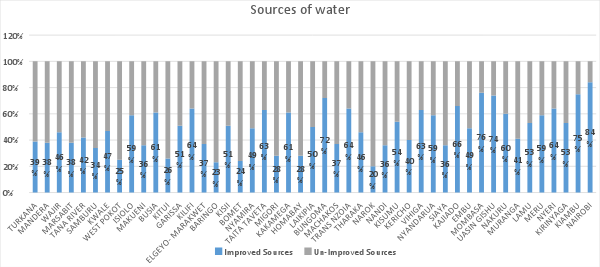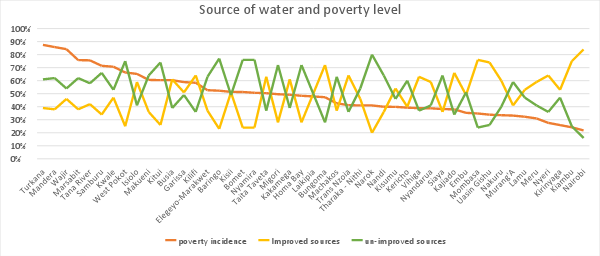It is by no mistake that water makes up approximately 71% of the whole universe and about 65% of human body. It is clear that water is vital for survival and a key component in most activities. Water is often an underestimated resource. It is clearly a game changer. Just too much or too little of water and disaster strikes. Drought, floods, and water-borne disease clearly cement the idea of “Water is Life.” Water is both giver and taker.
The Kenya Vision 2030 has put a goal on water and sanitation, which comes under the social pillar that states that ‘by 2030 all people should have access to water and sanitation.’ Water is a significance that affects all the three pillars of the vision 2030. It affects the political pillar because as a resource, water influences a lot of conflicts in the society such as the conflict in pastoralist communities. Under the social pillar, water affects health matters as it is currently evident with outbreaks of cholera all over the country. In relation to economic pillar, water is heavily relied upon for industrial use including the generation of power. This implies that it is detrimental to ignore the issues and water.
The story of water exposes the great inefficiencies by government agencies to deal with the issue of satisfaction. Is Kenya too dry to drown in water-related issues? Below is an analysis of key water-related issues.
The renewable water per capita in Kenya stood at 647M³. This falls short of the UN recommended minimum of 1000M³.Water Services and Regulatory Board (WASREB) reported three main goals that form the National Water Services Strategy (2007–2015) which include improvement of access, reduction of water losses (NRW) and improvement of sustainability. Below is a preview of the status of these National Goals.

Sources of water
The quality of water is highly connected to the source. Two major sources are improved and unimproved. The improved water sources are less exposed to contamination thereby regarded as safer regarding contamination with disease-causing micro-organisms. It is disappointing that as a country we are still facing cholera epidemic in this era, which is one of the waterborne diseases. It has been reported that in 2017, 16 counties out of 47 were affected by cholera. Some of these counties include Nairobi, Garissa, Murang’a Vihiga, Mombasa, Turkana, Kericho, Nakuru, Kiambu, Narok, and Embu.

In Kenya, 53% of the population have access to water from improved sources while 47% acquire their water from the unimproved sources. In rural areas, only 44% of people have access to water from improved sources as compared to 72% in the urban regions. This also means that 56% of people in the rural areas get water from unimproved sources relative to 28% in the urban setting. Only 25% of water from Kenya is piped which supplies 6% of the dwellings while only 0.7% of Kenya population harvest rainwater.

Poverty level and source of water

As indicated in the graph, counties with high poverty incidence (88%-60%) have fewer people accessing water from improved sources relative to those accessing water from unimproved sources. Most Counties with low poverty incidence (40% and below) have more people accessing water from improved sources as compared to accessing water from the un-improved sources.
With water, lies a great resource for thriving of a nation due to its multi-purpose uses including industrial use, agricultural use, and for home use. Lack of proper management, allocation, and utilization of this resources leads to trouble such as conflicts overs access and use and well as exposure to diseases such as cholera. The cholera outbreak experienced in the country, and that is still active in some regions, is an indicator that the management of water has not been achieved and that the attainment of the Vision 2030 goal of ensuring that all people have access to water and sanitation is still facing shortcomings.
Clearly, the access of water from improved sources is higher in urban areas as compared to rural areas. The situation seems to be worse in regions with high poverty areas, where most people access water from unimproved sources which is more exposed to contamination.
